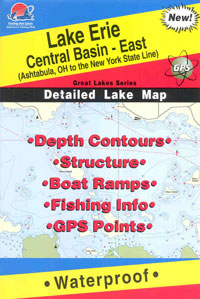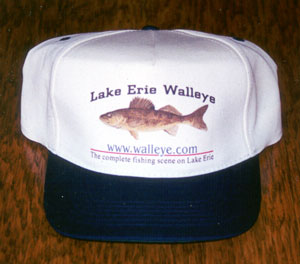Bobber’s Down, Fish ON!
By Ron Anlauf
Bobbers schmobbers, I’d rather do anything than
use a float! That’s the mind set of a lot of anglers that think the technique is to too
simple, or too basic. There welcome to their opinion but that
attitude is costing them some fish, and leaving plenty for the rest of
us.
the mind set of a lot of anglers that think the technique is to too
simple, or too basic. There welcome to their opinion but that
attitude is costing them some fish, and leaving plenty for the rest of
us.
Successful float fisherman have found that this
tried and true method can get a bait into areas that heretofore have
been nearly impossible to fish. By putting the right bait in the
right place and keeping it there you can maximize your chances for
boating ol’ marble eyes. A float (a.k.a. bobber), can do exactly
that, but to get the job done certain factors have to be taken into
consideration. The key is knowing the where and when, and then
taking advantage of what can be a perfect situation.
The “where” is ninety percent of the equation and
will determine if a float is the best application for the given
situation. Areas that would get the thumbs up are shallow rocky reefs
and bars, (the obvious), as well as deeper points and humps, and even
specific areas along weed edges. Specific areas include deep weedy
points, inside turns, and open pockets in the middle of a weed flat.
All of the aforementioned areas canhelp to concentrate fish, and is a
situation custom made for a float and live bait presentation. Anytime
walleyes bunch up in specific easily identified areas floats have a
chance to produce.
Flats, gradual breaks, and anywhere you find fish
that are spread out gets the thumbs down. For floats to be effective
you better have a concentration to work as the method is simply too
slow to cover a lot of water. Situations like these call for quicker
methods like rigging or even trolling, which can allow you to move
much quicker and get your bait in front of a much larger audience.
At the center of the presentation is the float
itself, and there has never before been so many options. The latest
entries are the European style floats, which have earned a spot in
the walleye angling lineup. Although the sleek European floats can
be effective, they are definitely not for every situation.
Where they have proven themselves is under tough conditions, and dead
calm water. The sleek slender styleoffers little resistance to a fish
that has taken the bait and will keep him holding on longer, giving
you more time to set the hook. Too much resistance and a light biting
walleye can easily reject the bait, leaving you empty handed.
Where they don’t do well is under the onslaught
of heavy waves, which just so happens to be when shallow water
walleyes are most active. The problem with the slender profile float
is their lack of buoyancy which allows the float to slide into and
under the first good wave, never to be seen again until reeled back
in. A situation like that calls for a good old fashioned Styrofoam
slip bobber, which has the ability to stay on top of the heaviest
seas and can help to keep your bait in front of the fish, where it
belongs. To keep the resistance problem to a minimum add as much
split shot as you can while still retaining the ability to stay on
top.
The whole idea behind a float is to suspend a
bait like a leech, minnow, or night crawler, and there are several
options. The first option would be the use of a plain hook which is
used most often. Good hook selections would match the size of the
hook to the bait being used. Leeches call for hooks in sizes six to
eight, like a #6 Northland Tackle’s Super Glo Hook. Crawlers are
better suited to hooks in sizes four to six, while minnows may range
from six to even a 1/0, depending on the size of the minnow.
Another option is to replace the plain hook with
a small jig head. Jig heads do a couple of things including giving
the bait some color, as well keeping a swimming bait pinned in place.
Leeches and minnows tend to swim up and out of the walleye zone and
who would blame them. Jig heads in the 1/32 to 1/4 ounce range are
the ticket, like a Northland Doodle Bug which is really designed for
ice fishing.
The
thing is it was designed for a straight up and down presentation and
has a nice wide gap which will mean more fish hooked. The key to it
all is to use just enough weight to keep the bait down. Hooking
options include running the hook through a leeches sucker (which is
the tail end), and will allow it to keep swimming and attracting ’eyes
on the prowl. Crawlers can be hooked through the middle which will
helpto nail the short strikers. Another method uses a half of a
crawler that is threaded onto a jig head. If you’reusing crawlers and
missing fish try the half crawler option.
One
of the toughest parts of successful float fishing is setting the hook
after a fish has taken the bait. To ensure good hook sets you’re
going to have to get the slack out. To help with the slack factor
longer spinning rods like St. Croix’s eight foot Slip Stick are in
order. The Slip Stick is telescopic and will fit in just about any
rod locker and is perfect using live bait and float. The longer
right with it’s light tip allows you to pick up more line on the
set, which will result with fewer misses.
Float fishing has gone high tech and is a weapon that deserves a spot
in any serious walleye anglers arsenal. The next time you run
into walleyes in a bad neighborhood or with a bad attitude try giving
afloat a try, as you just might surprise yourself.





 the mind set of a lot of anglers that think the technique is to too
simple, or too basic. There welcome to their opinion but that
attitude is costing them some fish, and leaving plenty for the rest of
us.
the mind set of a lot of anglers that think the technique is to too
simple, or too basic. There welcome to their opinion but that
attitude is costing them some fish, and leaving plenty for the rest of
us.